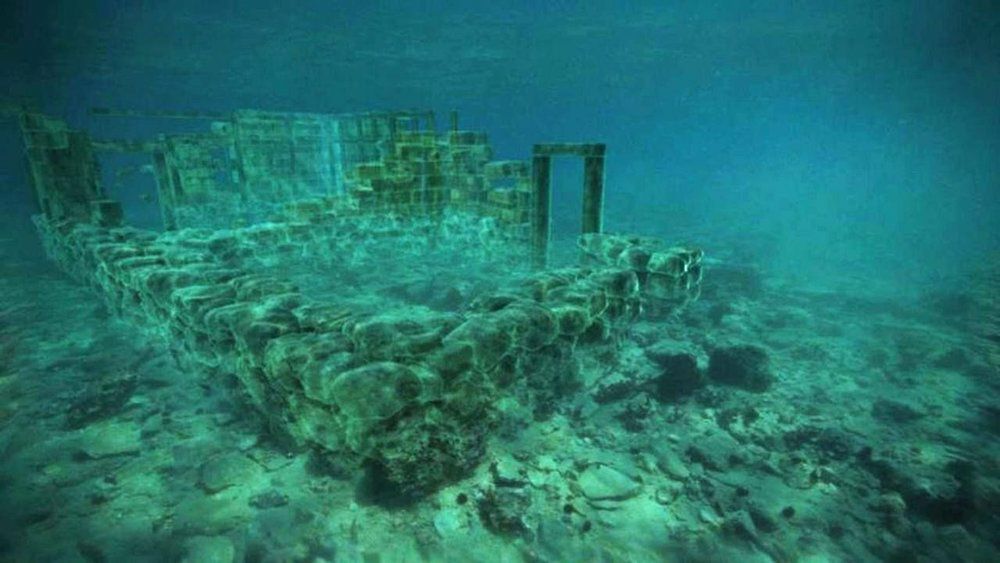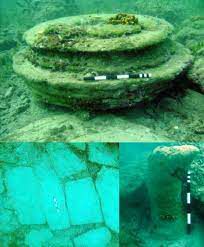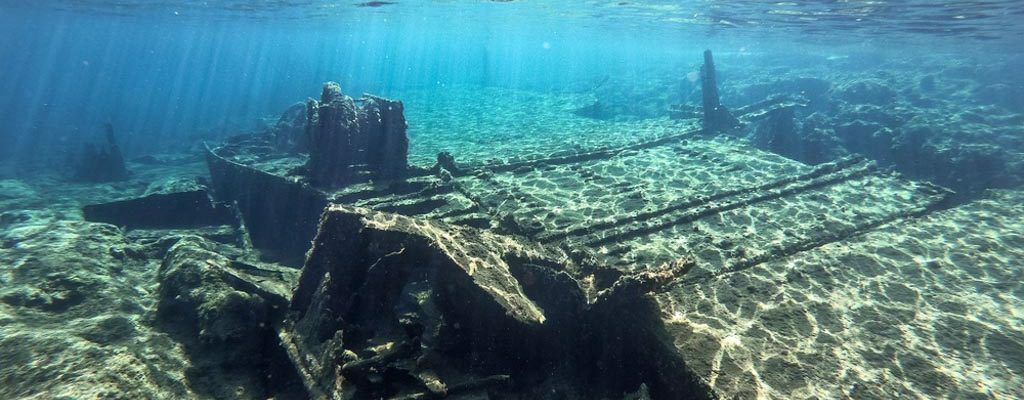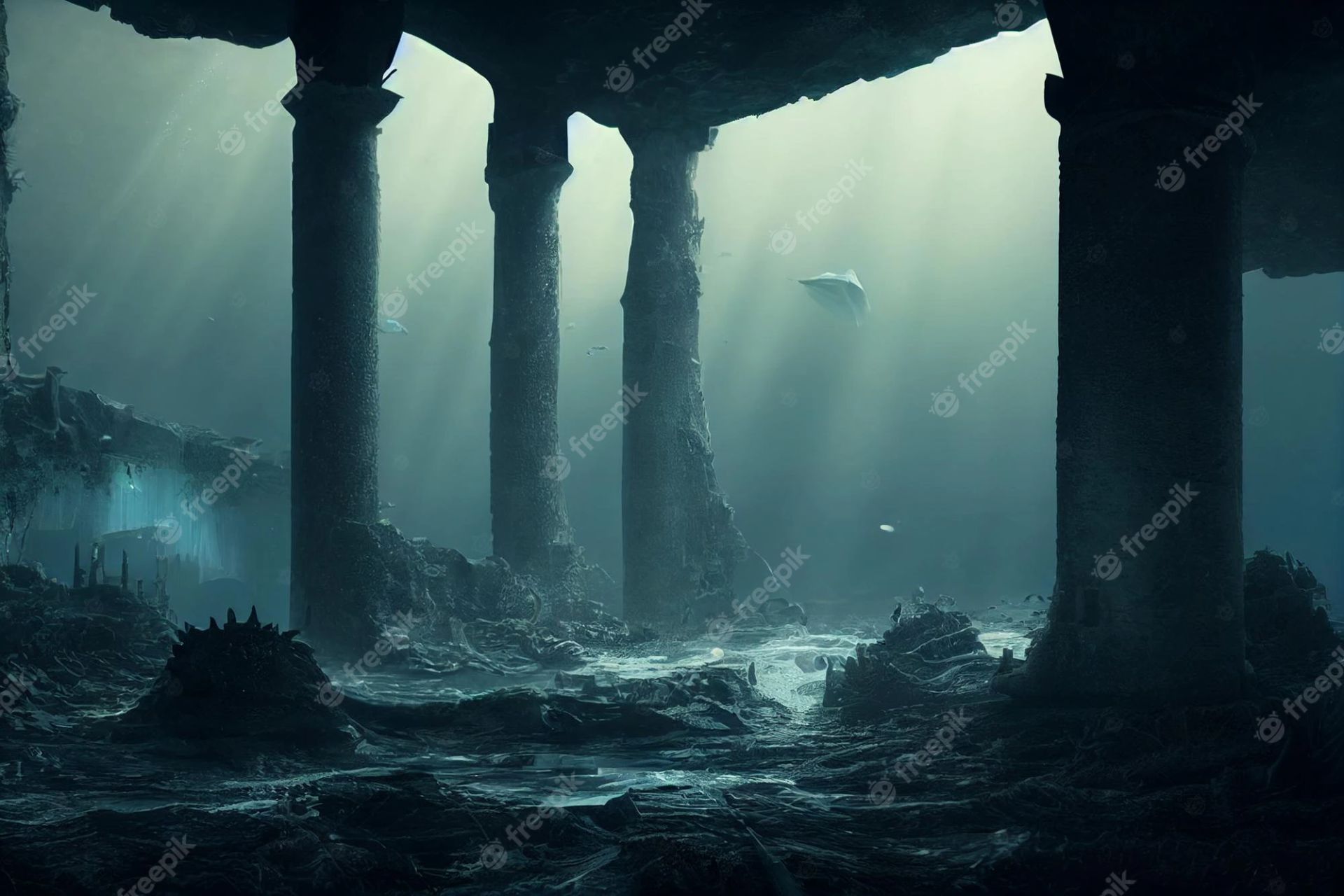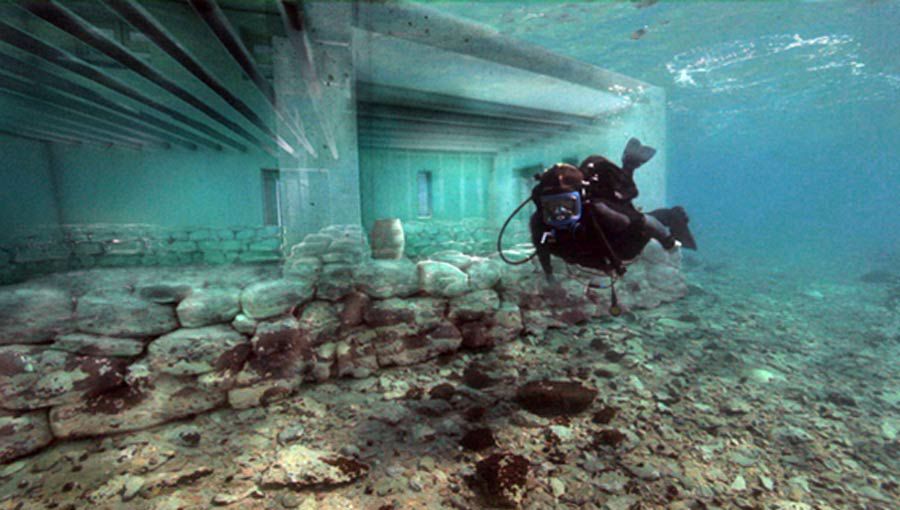The Ancient Underwater 5,000-Year-Old Sunken City in Greece is regarded to be the Oldest Submerged Lost City in the World.
Alopetri is one of the oldest populated cities and is about 5,000 years old (the oldest is the Mediterranean Sea). It is located on Lacoia’s southern beach in the Peloponnese region of Greece.
The Palopetri (Pal’s and Peter’s, or “Pa’l’s Stoe”) is the islet’s official anthem, well timed for the two Christmas celebrations that take place simultaneously; the actual anthem or anthems are kow.
Palopetri is a site that was discovered in 1967 by Nicholas Flemming and recorded in 1968 by a group of archaeologists from Cambridge. It is situated between the Palopetri islet and the Pota shore across the Elafoisos village.
According to Pasaias, the coastline, archaeological site, islet, and shallow sea region are all located inside the boundaries of the Elafoisos Municipality, which is where the former “Oo Gathos” peninsula once stood.
It is said to have an almost finished town square, complete with streets, buildings, and toms.
The ris were originally dated to the Myceea period, 1600–1100 BC, but later studies revealed an older occupation date beginning around 2800 BC, which includes early Bronze Age, Middle Mioa, and archaeological material.
The tow is thought to have been formed around 1000 BC by the first of three earthquakes that the region experienced. The region had previously re-emerged, so it had either been altered by agriculture or dispersed.
The two burial grounds are still exactly as they were centuries ago, despite erosion over the cemeteries. The location is in danger from damage from oats dragging anchors, as well as from tourists and their companions.
2009’s fieldwork focused mostly on mapping the location. It is the first composite of two digitally scanned images in three dimensions.
The development of many mapping technologies by military and oil prospecting organizations has improved the remediation process.
At least 15 ildigs are submerged in three to four meters (9.8-13.1 feet) of water throughout the city. The smallest clubs in 2009 only occupied 9,000 square meters (2.2 acres).
As of October 2009, plans are being made for more fieldwork sessions as well as a joint effort with the Greek government. These sessions will include exercises.
A team from the St. Petersburg Center for Field Robotics is also working alongside the archaeologists (from the University of Nottingham), with the goal of bringing underwater archaeology into the twenty-first century.
They have descended on the spot in a number of unique ways to describe it.
One of the study’s outcomes was the assertion that the tow was the center of the massive textile industry (based on the way that weights were brought in to the location). Moreover, numerous sizable pitharis pots (from Crete) were unearthed, indicating a significant trading port.
“City Beneath the Waves: Palopetri,” which was televised by BBC Two in 2011, featured the work of the British/Astralia archaeological team.
According to the UNESCO Commission for the Protection of the Underwater Cultural Heritage, Palopetri is a part of the underwater cultural heritage.
The UNESCO Commission for the Protection of the Underwater Cultural Heritage is responsible for protecting all underwater remains that date back one hundred years or more.
This initiative aims to prevent the destruction or theft of historical and cultural artifacts as well as looting. A comprehensive legal framework aids states parties in protecting their underwater cultural assets.
Hits: 7
